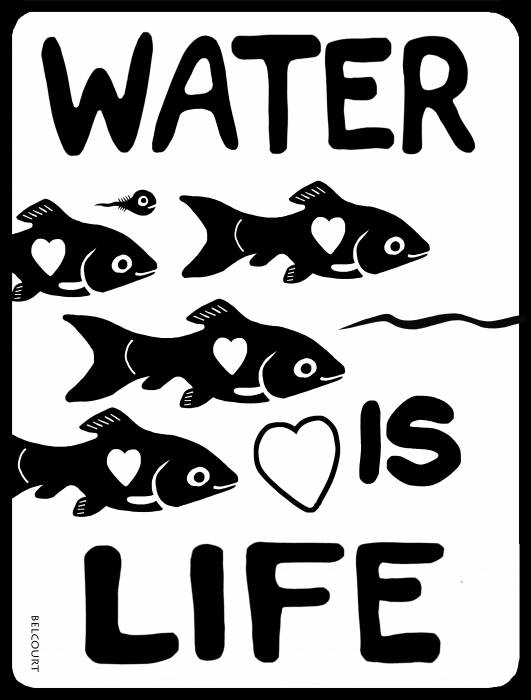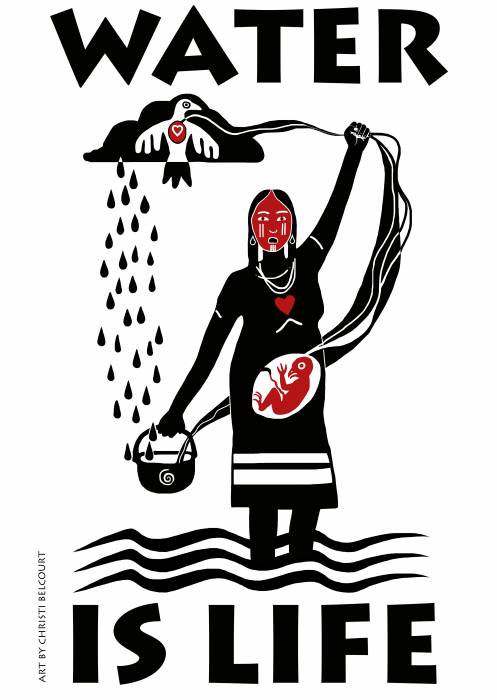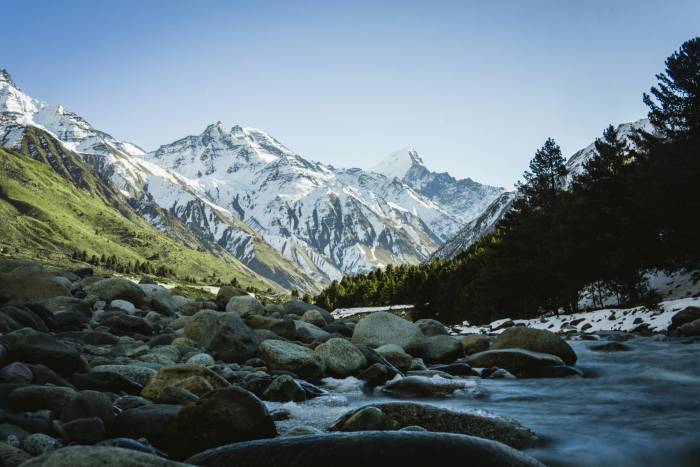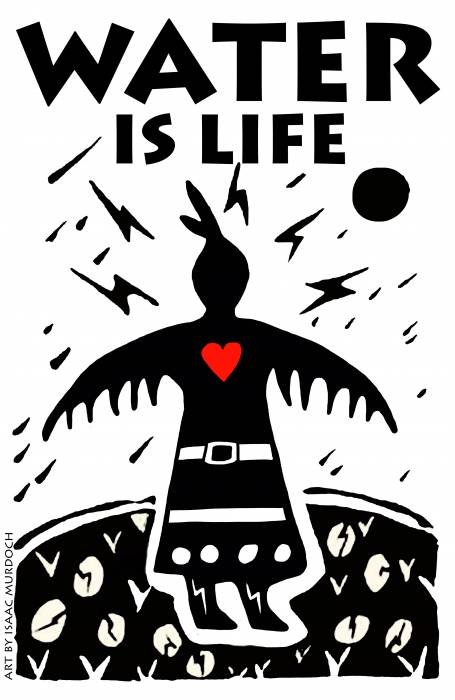World Water Week 2021 is drawing to a close, and among the many other crises currently making headlines, the myriad global issues interconnected with water have been but splashes of acknowledgement here and there across the noisy, chaotic news landscape that we find ourselves immersed in, week after week.
After all, it is just another week, in another year, another name for another event that we need to specifically carve out, which is supposed to call attention to another fundamental component of life on Earth that we need to protect.
But water is not just another issue — it’s an integral component of each of us, of the organism that is our planet, and the current of water that runs through it is what keeps everything going.
Water cycles through the organism of the Earth in the form of vapor, into the oceans, land reservoirs, frozen ice, glaciers, rain, and snow.
Water is a word that brings to the surface abundant metaphors; a romantic object, at times, when we want it to be.

We speak of our lives and the ways we wish we could change it in watery ways: the trickle down effects, the trickle down economics. The waves of progress we wish we would witness in our lifetimes; the ripples of hope we want to leave behind for those who come after us.
We well up with water and weep for the many things we wish we could change: for the state of the ocean — the world’s one united body of water, for the way it is being drowned in the waste we so easily push out of sight to be enveloped in it, for the way it is rising.
For the water we wish would find its way to those who need it, who don’t have enough. We feel the wrath of water in the floods and cyclones that are wreaking havoc on coastal communities, which promise to swell in years to come.
We worry about water choked by plastic, water that is now too salty to drink, water tables that crops and livelihoods rely on drying up.
The way we are boiling our water based planet — melting bodies of ice that are not ready to be water.
The fires and flooding we have witnessed in recent weeks are reflections of water out of balance.
Water is not romantic, water is fundamental, without water there is no life. Water is the domain in which our existential struggles are being played out.
In July this year, rainwater became flood water in a matter of hours on the globe’s diametrically opposed continents, while fires burned in between them.

The IPCC report warns that rains will intensify by 7% for each additional 1 degree that our planet warms. It predicts that storms will become wilder and wetter. The report dedicated 200 pages to the issue, and the next edition of the report slated for release in February 2022 is expected to cover the issue more thoroughly still.
As the atmosphere warms, the air will hold more water, and this will bring more rain. This acceleration of the hydrological cycle will lead to higher rates of evaporation in tropical areas, heavier rains in high altitude regions, and more extreme events in areas that already experience flooding. Higher temperatures will melt glaciers, shorten periods of snow cover, and in turn impact the water security of communities drastically.
The South Asia monsoon upon which upwards of one billion people rely may become more unpredictable: as this happens, flooding followed by water scarcity will present disastrous duality: when it does rain, it will be more likely to pour.
The rainfall issue is seen as one of the ways the climate crisis will manifest most visibly in the coming years.
Dr Andy Turner, one of the IPCC report’s lead authors, said “each additional degree of warming will exacerbate the frequency and severity of extreme events in monsoon regions, such as periods of heavy rainfall, flooding and drought.”
Melting glaciers do not only impact those communities in their immediate vicinities in high altitude regions: communities downstream rely on the freshwater they provide for drinking water and crop irrigation. As glaciers destabilize, the potential for damaging avalanches, landslides and flooding will also increase.

For the Asia region, another pressing concern is the issue of melting glaciers. This is particularly emphasized for regions that border the Himalayas.
During a panel discussion on a Green New Deal for Asia at the Asia Solidarity Lab, Sagarika Bhatta, founder of PowerShift Nepal — a women-led climate change organization — discussed the impacts of melting glaciers on countries in the Himalaya region all the way from Afghanistan to Myanmar:
“It profoundly affects us, both upstream and downstream,” she said. “In the context of Nepal, mountain communities are already vulnerable due to climate change and even if we limit warming to 1.5 degrees — which will be hard to do — mountain regions will face a three degree rise by the end of the century” she continued.
The Hindu Kush Himalaya Assessment predicts that temperatures in the 3,500 square kilometer region will warm whether or not the global target of 1.5 degrees is achieved.
While carbon emissions from the region are negligible, it is bearing the burden of disproportionately serious climate change impacts. The region sustains the largest permanent snow cover outside the North and South poles and facilitates the livelihoods of 240 million people.
Nepal faces a compounding crisis of water insecurity largely correlated with high temporal and spatial variations in water availability and governance issues which have failed to balance requirements for access to safe drinking water, sanitation and access to water for crop irrigation, energy needs and urban usage requirements with maintaining the integrity of water-dependent ecosystems.
The World Resources Institute (WRI) updated Global Water Risk Atlas, released this month, showed that up to a quarter of the world’s population faces ‘extremely high’ risk of water stress, finding that water withdrawals globally have doubled since the 1960s.
Its consequences are in plain sight in the form of food insecurity, conflict and migration, and financial instability.” said Dr. Andrew Steer, President and CEO of the World Resources Institute.

Water is fluid, water is nuanced. Water issues vary between regions, within countries, within communities. Water is too often a privilege, when it should be a right.
Water is inextricably linked to the work we do as climate activists. For more information on the issues affecting Nepal, here is a link to some of the inspiring climate justice work this women-led organization has been involved with in recent years.